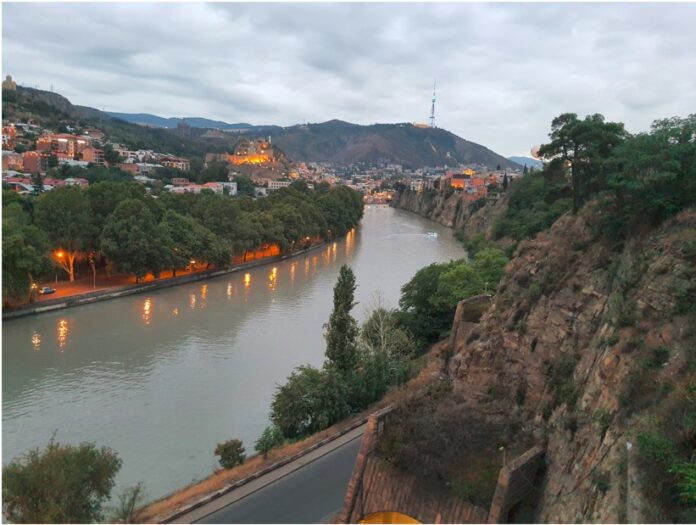© Photos and Text by Okay Deprem http://www.northtravel.org/
When NORTH TRAVEL announced the longest and most comprehensive touristic cultural tour from Turkey to Georgia just months ago, possible participants had very limited tangible and detailed imaginations of what exactly awaits them in this southern Caucasian country. It can even be said without exaggeration that; many of them were not expecting a more or less modest tour content, accompanied by the thought of “what can be the most in the Georgian country”. This is probably why, we set off with a relatively small staff, and first of all, we took our breath away in the capital city of Tbilisi. No one in our travel staff had ever seen this cultural metropolis of the South Caucasus, except me. Although we did not spend four days in “Tbilisi” in its Georgian equivalent, for two clear days, so to speak, we scoop the city. We were able to tour this Caucasian city, which rises and spreads around the Kura River, sometimes with our private vehicle and sometimes on foot.
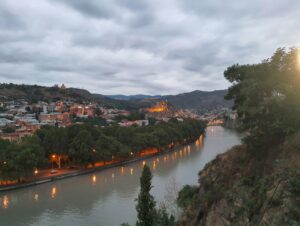
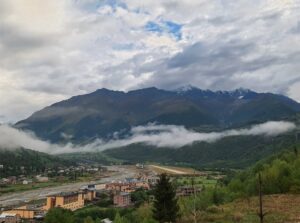
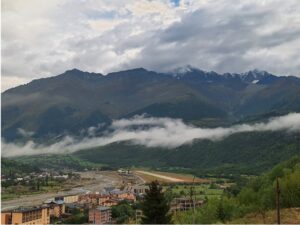
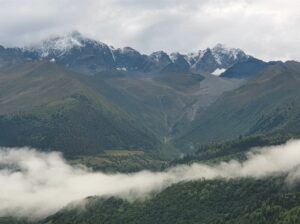
The scene that impressed our Tbilisi group at first sight was the untouched historical silhouette and natural texture of the city. Having come from a city like Istanbul, witnessing a view in Tbilisi that they could only see in Western and Southern Europe and that they had been longing for a long time, naturally relieved and opened them a lot. Then, they began to witness a west-east synthesis in the Georgian capital that they were not familiar with before. Tbilisi is eastern-oriental until the end, as long as it can stay; it was a city that managed to become European in a balanced and uninterrupted manner, at least as much and more than that, even as of the 19th century. So much so that seeing the abundance and diversity of museums, monuments and sculptures that are not and cannot be seen in many European countries was enough to enchant our group as much as possible. On the other hand, the lush cover of the city center and its periphery, which land rent and construction speculation has not yet plundered; The serene, quiet and colorful city aura witnessed throughout our tour, which is blended with two centuries old neo-classical, neo-baroque, art-deco and art-nouveau buildings surrounding the wide and straight streets and streets of Tbilisi made another sense…
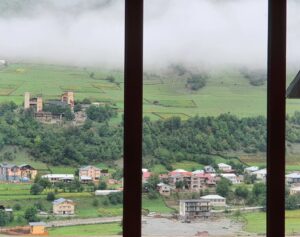
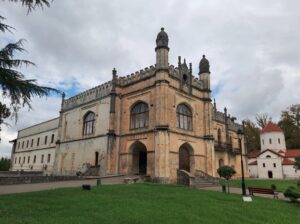
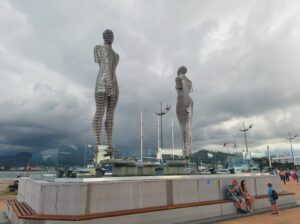
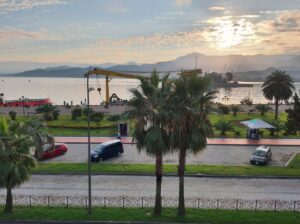
During the two days we stayed in Tbilisi, which has been one of the most important commercial and cultural settlements in the region for centuries, we went to the nearest historical capital Mtskheta and the legendary Kazbek Mountain. While walking through the almost untouched medieval town of Jvari, Samtavro monasteries and Svetitshoveli Cathedral, which await us in and around Mtskheta and are on the UNESCO World Heritage List, we literally got lost in an Asian-Caucasian architectural urban texture that we did not know before.
Hearing the stories of the multi-layered connections of the region’s millennium-year-old Christian temples with Cappadocia and Constantinople from the clergy curbed the traditional mood of Turkish touristic groups which quickly got bored in individual venues. However, it was quick to create the opposite effect.
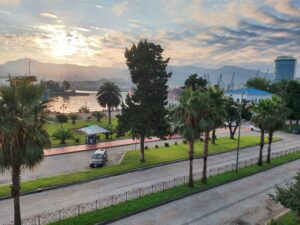
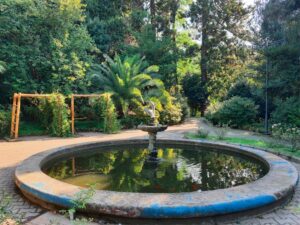
During our long day trip to see Kazbeki Mountain and its surroundings, located on the border of Georgia and the Russian Federation, we glided towards the Greater Caucasus Mountains for the first time. After leaving behind the gigantic dams between the mountains, the lofty monuments that greet us on the way and countless natural wonders, we proceeded on the “Georgian Military Road”, which goes up to altitudes between 2300 and 2400 in the Gudauri Mountain and winter tourism center. When we approach Kazbek Mountain, which is one of the most special peaks of the Caucasus with an altitude of more than 5000 meters, we stopped in the town of Stepantsminda, which was lost in the clouds, and were scattered in two jeeps as a group with a very special organization, and went to the Gergeti Holy Trinity Church, which is the most famous historical monument of the region. We climbed right. We had the privilege of visiting fairytale-like historical churches, which have survived untouched for centuries, in the midst of the magnificent scenery, where countless hills at 4000 meters disperse and rise under the fog beams. On the way back; Climbing from Kobi Village to Gudauri by cable car, we glided towards the pioneering peaks of the “Greater Caucasus Ridges” and took a long look at the mighty and vast mountain range once again…
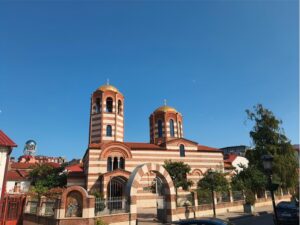
After walking around Tbilisi and its environs literally by creek, we now head to the West; On the face of it, we started to make our way towards the plains of Georgia, which is small on the map, but grows larger as we go into it. Our first stop is the city of Gori and its most popular tourist spot is Josef Stalin’s house-museum. Afterwards, our direction is Ahıska via the famous town of Borjomi. Even if we stopped by for a short lunch in Borjomi. Even just stopping by Borjomi the holiday and treatment center where the most delicious and quality drinking water of the former Soviet geography is obtained, for a short lunch was enough for our group to admire the charming and old architecture of this place with
its lush nature resembling a corner of paradise. Our final “station” for today is Ahıska and its capital Akhaltsikhe, located very close to the Turkish border (Ardahan – Posof).
The fact that there is a lady of Meskhetian origin in our mini group makes our visit even more meaningful. While we are visiting Rabati Castle, the very best of this area, both with and without a guide, we go on an indescribable time adventure, while we watch the nature of Ahıska, which fascinates us, from different corners of the great castle…
Now we have a series of tours covering Kutaisi, the second capital of the country, and the ruins around it. As a group, Kutaisi fascinates us with its harmonious, balanced urban harmony, which has been extremely well preserved and reworked and mostly marked by the architecture of its recent centuries.
Especially while we tour the Geguti Palace, Gelati and Motsameta Monasteries, in the periphery, which are also on the “UNESCO World Heritage List”, and the famous Bagrati Cathedral in the center, accompanied by local guides, we witness the depth and richness of Georgian history, which we have never known, thanks to the generous guidance of the religious officials.
Again, we enter the Sataplia Cave, which is located in the national park of the same name in the province of Kutaisi, surrounded by virgin forests and lush vineyards and is known worldwide for its dinosaur footprints.
We leave Kutaisi one morning and set out for another long road, where we will approach the closest of the Greater Caucasus Mountain Range. Hours after we saw one of the world’s largest dams Cvari, on the highway from above, one of the largest dams and hydroelectric power plants in the world, we arrive and settle in Mestia, the precious town of Upper Svaneti Province, one of the highlights of our trip. Many of our team have seen for the first time in their lives the numerous peaks of 5000, which are lined up towards the Kabardino-Balkaria border, such as Uşba, where we had our photos taken at an altitude of more than 4700 meters on the road. After the unforgettable night we spent in the highest mountain hotel of this place, we start our journey over Zugdidi towards Batumi…
After a quick stroll in Zugdidi, one of the country’s most important palaces, the neo-gothic style Dadiani and its garden, we continue to Batumi via Poti parallel to the Black Sea. In Batumi, which is the second largest and at the same time the most attractive seaside resort of Georgia; We are wandering the seaside boulevard and parks decorated with endless monuments and sculptures in a wonderful weather. The next day, after touring one of the largest Botanical Gardens in the world with our private electric vehicles, we finally get on the cable car to have a top view of the city and its surroundings, and take the last pictures here and head to the airport.

